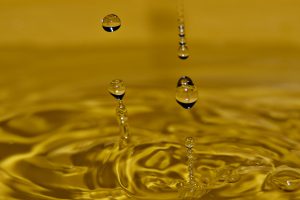
When addressing anything physical or with the mind it’s imperative to realize the limitations with searching for the answer in research, a blog, experts’ advice, and in media hype regarding essential oils. While these suggestions could be helpful in a general way, it is best to consider the science and clinical reports while also taking into account your own body’s wisdom, health state, specific triggers, history, and unique biochemistry.
After briefly summarizing three considerations last weekend in my oily tips, I promised I’d be back to expand on them.
I just thoroughly reviewed the first of these three factors to keep in mind when choosing which essential oil to use for mood support or for any health concern for that matter. I highlighted that essential oils can impact the mood as they simultaneously help with supporting the physiology and biology of the body. The emotional properties of essential oils go well beyond their aromatic quality and are multifactorial, complex, and comprehensive. This was made evident with the review of essential oils biochemistry that was also revealed in Part I.
So, now it’s time to move onto the second factor on the list bolded below:
- The complexity and multifactorial actions of essential oils
- Essential oils individualized effects and epigenetic impact
- The concept of synergy
This series is intended to help you to appreciate and honor your body and the science of essential oils while being awed at the wisdom of nature and their medicinal and healing properties!
I know I am.

Three Reasons Why You Should NEVER Base Your Decisions on Which Essential Oils to Use Solely on Any Expert, a Well-Meaning Blog, or Any Research Study
Reason Two:
They Exhibit Individualized Effects and Have Epigenetic Actions
The Epigenetic- Essential Oil Impact
One of my very first oily tips highlighted the epigenetics of essential oils. It described the versatility of an essential oil and that its wide array of actions interacts with our own internal processes and external influences. This can result in a change in how our genes express themselves- toward health or disease:
A quality essential oil will contain a vast amount of therapeutic constituents that your body can “pick and choose” from in order to rebalance its physiological processes. This is the concept of essential oils “synergy” and is one of the most amazing things about essential oils. I refer to it as their “innate” healing power.
True, an essential oil will possess general properties based on its biochemical makeup, but factors such as our own genetic variances, microbiota diversity, and “internal environment” all influence its actions. (Read more about that here, if you wish.)
Essential oils seem to possess a “knowing” on exactly how they can help to balance the body in the way it needs.
I explained this more in part II of my epigenetic series. In it, I highlighted a study that reported on metabolomic markers that essential oils impacted. (The metabolome is the collection of all metabolites from cellular processes in a cell, tissue, organ or organism.) The researchers discovered that the biochemical pathways of individuals were differentially affected.
As summarized in a 2015 review in Asian Pacific Journal of Tropical Biomedicine:
Once the oils are in the system, they remodulate themselves and work in a friendly manner at the site of malfunction or at the affected area.
In other words, the biochemical, physiological, and psychological properties of essential oils are vast and are complementary to our body’s needs. These secondary metabolites travel to the area of dysfunction in an attempt to rebalance the body. This is much different than manipulating one pathway with a synthetic compound to suppress symptoms.

The Medication-Essential Oil Interaction Effect
Another area to consider with individual responses are that medications may affect how essential oils work in our body. This is not only important for which oils to choose, but how to use them with other health modalities. This was also summarized in a previous blog when discussing potential interactions of essential oils with drugs:
- They both influence the organs of elimination and excretion, therefore, it’s important to monitor your response and assess with your doctor the dosage throughout use. You may need to tweak things with the introduction of natural therapies.
- Everyone is different, with different detoxification capacities and abilities to metabolize drugs, supplements, and nutrients. Therefore, be aware of your body and listen to its response.
- Space out medications at least 2-3 hours from using essential oils. If on a “blood thinner”, only use oils if your physicians are monitoring “clotting time” (PT/PTT/INR).
- Oils do have limited metabolism in the liver and are then peed and breathed out. In geek terms, according to Therapeutic Benefits of Essential Oils, Nutrition, Well-Being and Health, most components of essential oils are taken in then metabolized by limited phase I, followed by glucuronidation and sulfation and then through the kidneys as polar compounds or exhaled through the lungs as CO2. (1) So, if you are finding you are peeing a lot on oils, you may want to decrease your dose a bit.
You can get more tips on the space factor, the tweak factor, and the bathroom factor here. You can also learn more about if you are responding differently than expected to essential oils…now…

Considerations for the “Sensitive Types”
Some people have especially strong reactions to most anything. It may stem from their nervous system interacting with their own epigenetics (such as genetic variances in detoxification enzymes), and/or a “primed” immune system. This makes it imperative to go very slow with essential oils.
How do you know if you are the “sensitive type?” These are people that tend to be reactive to many things. They will be more strongly influenced by the oils ability to detoxify due to their genetic variabilities (such as those that effect phenol metabolism), their current level of stress, and the state of and their gut and its immune connection. For this reason, they could be more at risk of skin sensitization and photosentization.
Although oils aren’t “allergens” themselves, they can act as “haptens.” In other words, they can accelerate an environmental response that was already present. You can read more about this here. You can also access more on allergies and essential oils here.
Next, we will dive into the third factor to be aware of with essential oils, synergy.
Which I will finish off in the next blog.

Summary So Far
The actions of essential oils are systemic, effecting our physiology, biochemistry, and psychology. They will affect each person differently due to their complexity and synergy and what that particular person needs at the time.
This is not meant to complicate your life. Whichever essential oil you choose, it will likely bring harmony, if you use it safely and with proper application. These multi-factorial actions will all be working together at once with every oil, every time. However, if you aren’t getting the response you desire, it’s time to dig deeper and look at the reason.
Please note: All newbies and the curious should review the resources for essential oils safety here.
Coming up in future blogs:
- The concept of synergy
- An overview of essential oils for summer lovin’ in mind and body
- Back to the hormonal series with Ms. Geranium Oils as the next case to be aquitted for disruption of reproductive responses!
Stay tuned…
Many blessings from my heart to yours!
This material is for information purposes only and is not intended to diagnose, treat, or prescribe for any illness. You should check with your doctor regarding implementing any new strategies into your wellness regime. These statements have not been evaluated by the FDA. (Affiliation link.)
Disclaimer: This information is applicable ONLY for therapeutic quality essential oils. This information DOES NOT apply to essential oils that have not been tested for purity and standardized constituents. There is no quality control in the United States, and oils labeled as “100% pure” need only to contain 5% of the actual oil. The rest of the bottle can be filled with fillers and sometimes toxic ingredients that can irritate the skin. The studies are not based solely on a specific brand of an essential oil, unless stated. Please read the full study for more information.



